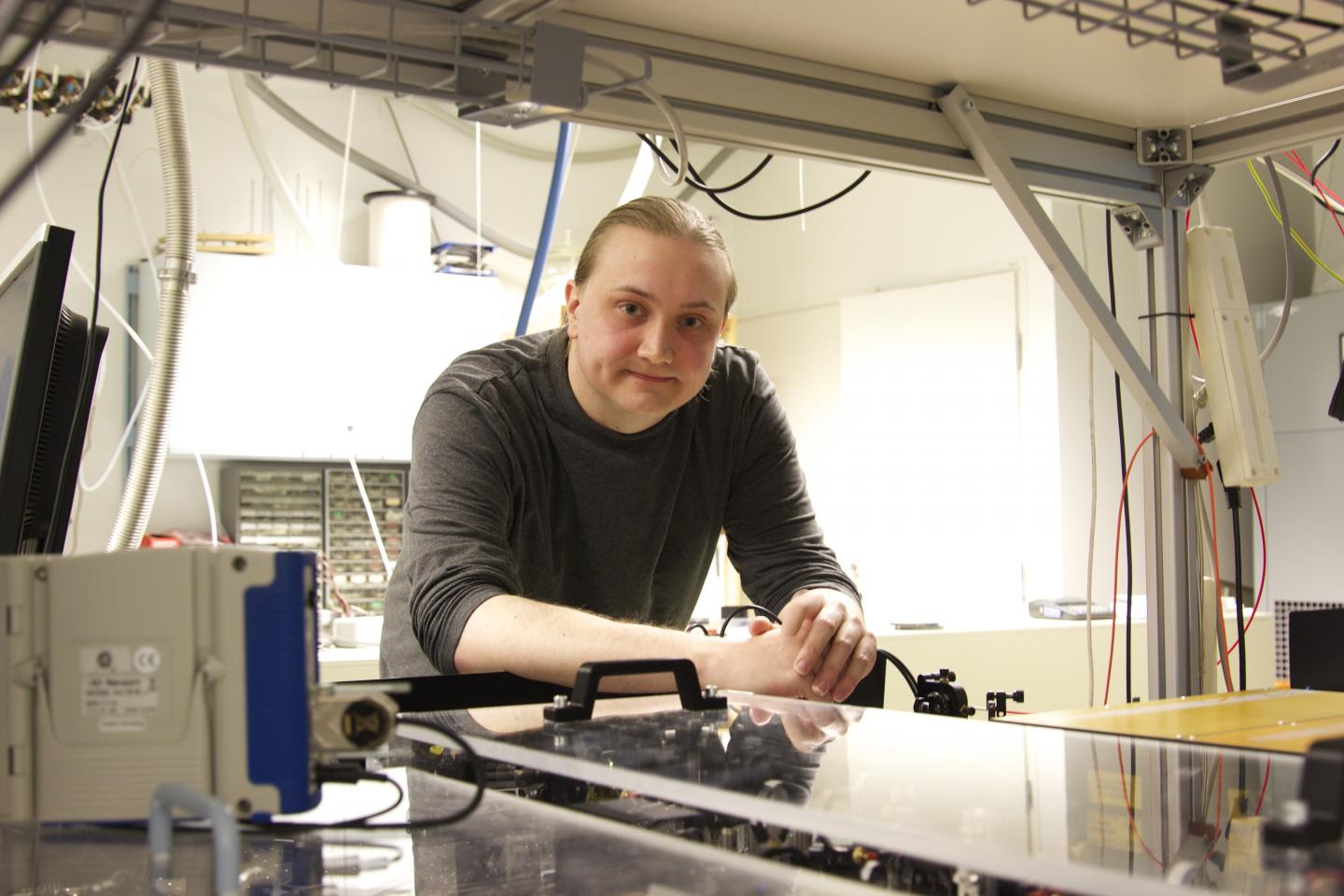
Credit: Anu Vallinkoski
The method developed by Juho Karhu in his PhD thesis work at the University Helsinki, is a first step towards creating a precise measuring device.
The article by doctoral researcher Juho Karhu was published in February, 2019, in Optics Letters, one of the most internationally renowned publications in the area of photonics. The article described a new method for measuring radioactive methane.
– The new method is an optical one based on spectroscopy. Previously, radioactive methane has been measured with accelerator mass spectrometry, involving expensive and huge machines. Optical measuring could be a cheaper and more agile method, Karhu says.
The method created by Karhu is based on the absorption of materials, i.e. how the material retains light at different wavelengths. By measuring how much the material absorbs, we can deduce how much it contains different components.
In his research, Karhu analysed which wavelength the light source used should have in order to measure radioactive methane. This is a first step towards a functioning measurement device.
Optical methods have been used before to measure radioactive carbon dioxide. So far, we have not reached the same precision with optical methods as with accelerator mass spectrometry. Karhu is the first scientist to apply optical techniques to the measurement of radioactive methane.
Applications within the energy industry
According to Karhu, the optical method for measuring radioactive methane could be applied in fields such as energy production.
— The method could be used for finding out the composition of fuel, for example. The authorities could analyse how much of a biofuel consists of biogas and how much is natural gas, Karhu explains.
The method could also be applicable in nuclear power plants. It could be used to measure the levels of radioactive methane on-site. Samples would no longer have to be sent to a laboratory.
Radioactive methane occurs naturally all around us. It is in the atmosphere and all living beings. However, the levels are very low. A very small part of all natural methane is radioactive.
In small doses, radioactive methane is harmless to humans and the environment.
###
Karhu gained the topic for his thesis work from the Technical Research Centre of Finland, where Senior Fellow Guillaume Genoud heads the development of the optical measurement of radioactive molecules.
Assistant Professor Markku Vainio was the supervisor for the thesis belonging to the field of physical chemistry.
Reference:
Broadband photoacoustic spectroscopy of CH414 with a high-power mid-infrared optical frequency comb, Juho Karhu, Teemu Tomberg, Francisco Senna Vieira, Guillaume Genoud, Vesa Hänninen, Markku Vainio, Markus Metsälä, Tuomas Hieta, Steven Bell, and Lauri Halonen. Optics Letters, Vol. 44, Issue 5, pp. 1142-1145 (2019), https:/
More information:
Doctoral researcher Juho Karhu, Department of Chemistry, University of Helsinki,The doctoral programme in chemistry and molecular sciences (CHEMS), [email protected]
Associate Professor Markku Vainio, University of Helsinki, [email protected], Department of Chemistry, +358 50 4486525
Media Contact
Riitta-Leena Inki
[email protected]
Original Source
https:/
Related Journal Article
http://dx.




